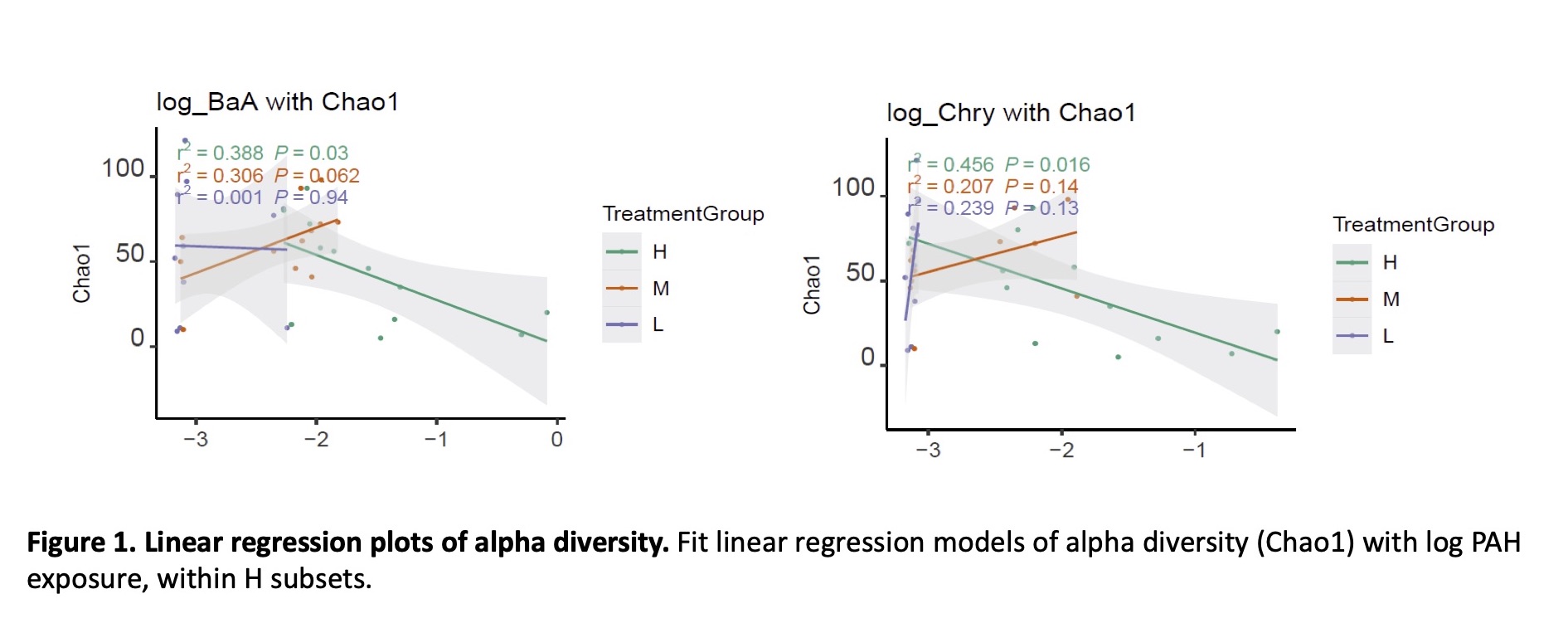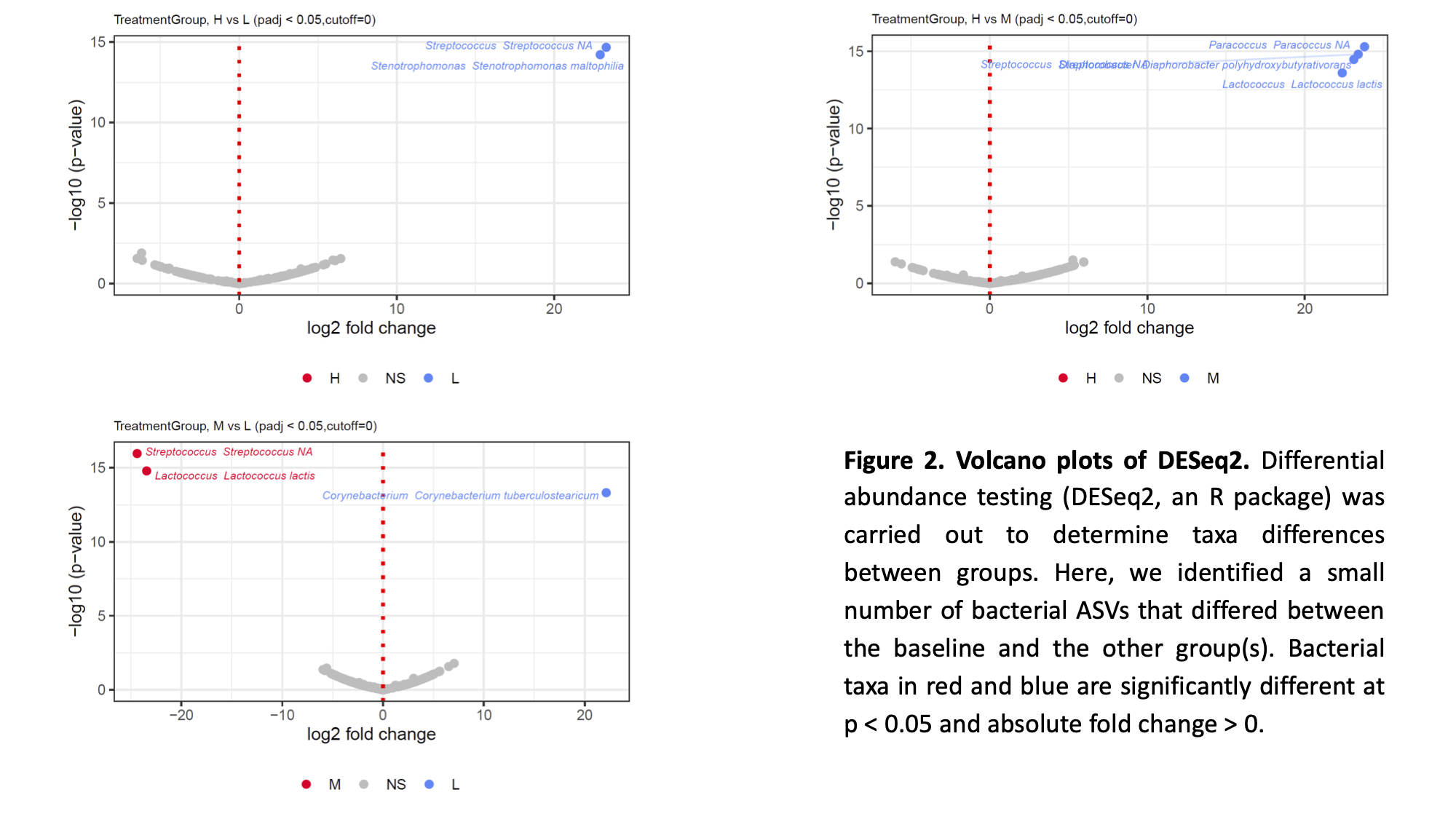Environmental Health
Category: Abstract Submission
Environmental Health I
132 - The Effect of In Utero Polycyclic Aromatic Hydrocarbon Exposure on the Neonatal Meconium Microbiome
Friday, April 22, 2022
6:15 PM - 8:45 PM US MT
Poster Number: 132
Publication Number: 132.108
Publication Number: 132.108
Divya Keerthy, Columbia University/NewYork Presbyterian, New York, NY, United States; Lingsheng Wen, Columbia University Vagelos College of Physicians and Surgeons, New York, NY, United States; Dwayne Seeram, Columbia University Vagelos College of Physicians and Surgeons, New York, NY, United States; Heekuk Park, Columbia University Medinal Center, New York, NY, United States; Anne-Catrin Uhlemann, Columbia University Vagelos College of Physicians and Surgeons, New York, NY, United States; Julie B. Herbstman, Columbia University, Warren, NJ, United States

Divya Keerthy, MD
Clinical Fellow in Perinatal-Neonatal Medicine, PGY6
Columbia University/NewYork Presbyterian
New York, New York, United States
Presenting Author(s)
Background: In utero exposure to environmental polycyclic aromatic hydrocarbon (PAH) is associated with neurodevelopmental impairments, prematurity and low birth weight. It may also lead to dysbiosis given that the gut microbiome serves as an intermediary between self and external environment. Exploring the impact of PAH on microbiota may help elucidate their role in disease.
Objective: The objective of this study is to evaluate the effect of in utero PAH exposure on meconium microbiome.
Design/Methods: We evaluated 49 mother-child dyads within Fair Start Birth Cohort with adequate meconium samples who had normal spontaneous vaginal delivery after 37-week gestation. Exclusion criteria included maternal infection, perinatal antibiotics, GBS positive status, prolonged rupture of membranes or neonatal intensive care admission. Prenatal PAH was measured using personal active samplers housed in backpacks worn for 48 hours during third trimester. In first 48 hours of life, meconium was collected and frozen at -80°C. DNA extraction, sequencing V3-V4 region of the 16S rRNA gene, Amplicon Sequence Variant analysis using DADA2 pipeline and taxonomy assignment against Silva were performed.
Results: Categorical exposure groups (high (H), medium (M), low (L)), were based on total PAH tertile. Low read counts or sequencing failure occurred in 14 samples. Remaining 35 samples were analyzed. No significant difference in bacterial alpha diversity (richness or evenness) was observed between groups for Chao1 nor Shannon index. Within H subset (n=12), there were significant linear relationships between Chao1 (richness) index and log benzo-a-anthracene and log chrysene (Fig. 1). In terms of beta diversity, no significant difference was observed across groups using UniFrac, weighted UniFrac, or Bray method. Using differential abundance testing, significantly differentially abundant taxa were observed for all comparisons among treatment groups H, M, and L (Fig. 2).Conclusion(s): Meconium microbiome showed presence of detectable bacterial organisms. In utero PAH exposure may alter bacterial communities. Mechanism of specific PAHs (benzo-a-anthracene and chrysene) having differential effects will need further evaluation. A possible mechanism explaining the differences in species abundance between exposure groups includes activation of inflammatory pathways through the PAH activated aryl hydrocarbon receptor altering gut habitability. These findings are limited by small sample size but demonstrate the feasibility of performing this study on a larger scale. Our next steps include using mixture models to evaluate these diversity metrics.
Figure 1. Linear regression plots of alpha diversity. Fit linear regression models of alpha diversity (Chao1) with log PAH exposure, within H subsets.
Fit linear regression models of alpha diversity (Chao1) with log PAH exposure, within H subsets.
Figure 2. Volcano plots of DESeq2. Differential abundance testing (DESeq2, an R package) was carried out to determine taxa differences between groups. Here, we identified a small number of bacterial ASVs that differed between the baseline and the other group(s). Bacterial taxa in red and blue are significantly different at p < 0.05 and absolute fold change > 0.
Differential abundance testing (DESeq2, an R package) was carried out to determine taxa differences between groups. Here, we identified a small number of bacterial ASVs that differed between the baseline and the other group(s). Bacterial taxa in red and blue are significantly different at p < 0.05 and absolute fold change > 0.
Objective: The objective of this study is to evaluate the effect of in utero PAH exposure on meconium microbiome.
Design/Methods: We evaluated 49 mother-child dyads within Fair Start Birth Cohort with adequate meconium samples who had normal spontaneous vaginal delivery after 37-week gestation. Exclusion criteria included maternal infection, perinatal antibiotics, GBS positive status, prolonged rupture of membranes or neonatal intensive care admission. Prenatal PAH was measured using personal active samplers housed in backpacks worn for 48 hours during third trimester. In first 48 hours of life, meconium was collected and frozen at -80°C. DNA extraction, sequencing V3-V4 region of the 16S rRNA gene, Amplicon Sequence Variant analysis using DADA2 pipeline and taxonomy assignment against Silva were performed.
Results: Categorical exposure groups (high (H), medium (M), low (L)), were based on total PAH tertile. Low read counts or sequencing failure occurred in 14 samples. Remaining 35 samples were analyzed. No significant difference in bacterial alpha diversity (richness or evenness) was observed between groups for Chao1 nor Shannon index. Within H subset (n=12), there were significant linear relationships between Chao1 (richness) index and log benzo-a-anthracene and log chrysene (Fig. 1). In terms of beta diversity, no significant difference was observed across groups using UniFrac, weighted UniFrac, or Bray method. Using differential abundance testing, significantly differentially abundant taxa were observed for all comparisons among treatment groups H, M, and L (Fig. 2).Conclusion(s): Meconium microbiome showed presence of detectable bacterial organisms. In utero PAH exposure may alter bacterial communities. Mechanism of specific PAHs (benzo-a-anthracene and chrysene) having differential effects will need further evaluation. A possible mechanism explaining the differences in species abundance between exposure groups includes activation of inflammatory pathways through the PAH activated aryl hydrocarbon receptor altering gut habitability. These findings are limited by small sample size but demonstrate the feasibility of performing this study on a larger scale. Our next steps include using mixture models to evaluate these diversity metrics.
Figure 1. Linear regression plots of alpha diversity.
 Fit linear regression models of alpha diversity (Chao1) with log PAH exposure, within H subsets.
Fit linear regression models of alpha diversity (Chao1) with log PAH exposure, within H subsets.Figure 2. Volcano plots of DESeq2.
 Differential abundance testing (DESeq2, an R package) was carried out to determine taxa differences between groups. Here, we identified a small number of bacterial ASVs that differed between the baseline and the other group(s). Bacterial taxa in red and blue are significantly different at p < 0.05 and absolute fold change > 0.
Differential abundance testing (DESeq2, an R package) was carried out to determine taxa differences between groups. Here, we identified a small number of bacterial ASVs that differed between the baseline and the other group(s). Bacterial taxa in red and blue are significantly different at p < 0.05 and absolute fold change > 0.